The location of Genghis The location of Genghis Khan’s burial site is an 800-year-old mystery that has captured the imagination of explorers and scholars alike. American adventurer Alan Nichols believes he may be one step closer to solving the puzzle.Khan’s burial site is an 800-year-old mystery that has captured the imagination of explorers and scholars alike. American adventurer Alan Nichols believes he may be one step closer to solving the puzzle.
Post Magazine, 2016, Words and Pictures Tessa Chan
“I could tell you where Genghis Khan is buried,” says Alan Nichols, the first time we speak. “But then I’d have to shoot you.”
We laugh, but I am not sure the American explorer isn’t serious: after all, it’s a mystery that’s endured for nearly 800 years.
There have been many attempts to find Genghis’ tomb by grave robbers, adventurers and archaeologists. Most have been centred on Burkhan Khaldun, in the Khentii province of northeastern Mongolia, the great warrior’s birthplace. According to The Secret History of the Mongols (1240), the oldest surviving literary work on the last days of Genghis, he sought refuge here, worshipped here, declared it the most sacred mountain in Mongolia and – most intriguingly – exclaimed, “Bury me here when I pass away.” However, all searches of the area have proved fruitless.
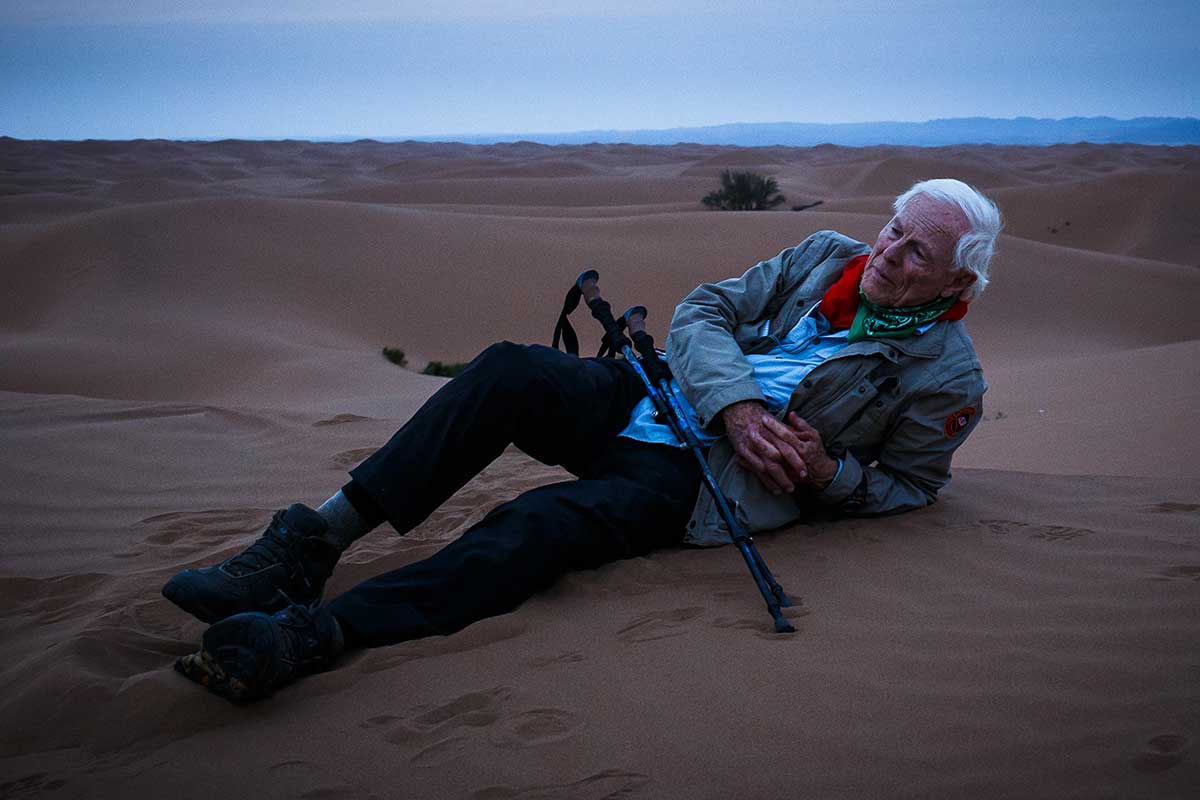
After a decade of research, Nichols, 86, an attorney, published author and expert on Tibet and China, is convinced Genghis’ final resting place is elsewhere. He invited me to join an expedition to show the tomb is hidden where he thinks it is, but his emails were so cryptic that only at the last minute did I know which country to book flights to.
At first, all I was told was that we were going “somewhere in historical Mongolia”, the route and plans changing in the days leading up to our meeting.
His obsession with secrecy is largely due to concerns about what could happen should knowledge of the burial site fall into the wrong hands. Not only would the discovery of the tomb of the founder of the Mongol empire be of huge historical significance, it’s also believed to be full of jewellery, precious metals and relics.
“I’m very careful about not telling people where it is,” he says. “I have agreements with all the technical people – I’m a lawyer, as you know – and I’ve already thought how to make sure that nobody lets it out” before, that is, he’s been able to go through the correct channels and guarantee some measure of protection.
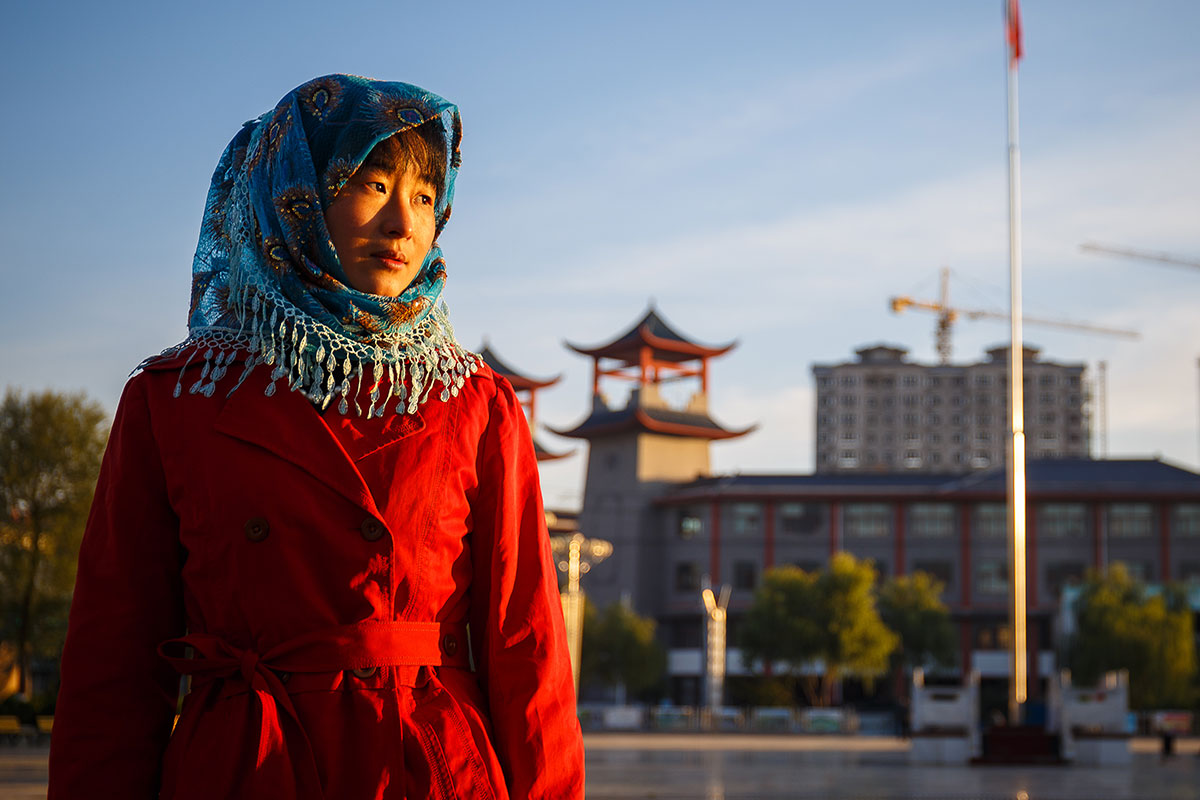

Nichols was the 42nd president of the Explorers Club, a New York-founded international society that promotes scientific exploration, and he holds several world firsts, including being the first Westerner to circumambulate Tibet’s most sacred mountain, Mount Kailas, and the first to cycle the entire Silk Road. He’s been studying sacred mountains for 60 years but Nichols’ search for Genghis’ tomb is contentious.
“Mongolians are fairly unanimous in not wanting their founder to be disturbed,” says Mongolia-based American professor and anthropologist Jack Weatherford, author of Genghis Khan and the Making of the Modern World (2004). “He said, ‘Let my body die, but let my nation live.’ Therefore, people should ignore the body and concentrate on the welfare of the nation. The idea that anyone would search for the tomb is disturbing for most Mongols, and the idea of foreigners searching for it can be quite alarming.”
Genghis was a master of deception. He would mislead enemies into thinking his men were retreating when they were lying in wait and use propaganda to spread fear about the size and ferocity of his army. Although most historians agree he was killed on August 18, 1227, during the fall of Yinchuan, now the capital of the Ningxia Hui autonomous region, there is surprisingly little in writing about how the warrior died or his burial.
“Mongols have strict taboos about discussing death; so very little is recorded,” says Weatherford. “This created many opportunities for foreigners to write all types of imaginative and speculative scenarios of what happened.”
Some say he was struck by lightning, others that he was killed by a vengeful queen, while still others believe he was killed in battle or falling off his horse.
He is said, however, to have left clear instructions that nobody should disturb his remains. One legend has it that the 1,000 soldiers who carried the khan’s body to its burial site were killed to prevent them from disclosing its location, then those who killed the burial brigade were also dispatched, and thousands of horses were released to trample the ground in which he was buried, to hide any trace of it as having been disturbed. Other stories tell of a forest being planted or a river diverted, to hide the site.
There was excitement when Genghis’ palace was discovered by a Japanese-Mongolian expedition in 2004, as ancient texts refer to officials travelling daily between the palace grounds and the burial site, to conduct rituals, yet the tomb was not found.
One of the most dedicated Genghis hunters, American amateur archaeologist Maury Kravitz, spent 40 years searching for the tomb near Burkhan Khaldun, and reportedly had to pull out of one excavation due to a series of unfortunate events that included team members being bitten by pit vipers and cars rolling off hills for no apparent reason – reinforcing beliefs that the tomb is protected by a curse. That expedition was publicly condemned by a former Mongolian prime minister but Kravitz continued his efforts until he died of heart disease, aged 80, in 2012.
Hope has been revived in recent years by technological advances. California-based research scientist Albert Lin Yu-Min has been leading a crowdsourcing effort to analyse satellite imagery and employ non-invasive tools to search for anomalies underground near Burkhan Khaldun.
Convinced everyone else is hundreds of miles off the mark, however, Nichols has zeroed in on a sacred site he refers to simply as “Mountain X”, and is now attempting to prove that this is where Genghis’ remains lie.
“I already know that there are anomalies down there,” he says. “I know something is under that ground that is not part of the ground.”
What makes him so sure?
“I’ve already been on three expeditions, and I spent the first seven years developing criteria [including distance, terrain and allowances for shamanistic beliefs and the probable use of deception] for locating the tomb of Chinggis Qa’an,” which, according to Nichols, is a more accurate rendering of the name.
A few weeks after our initial phone call, I meet Nichols and his crew over breakfast in Yinchuan. They’ve been in the field for two weeks and have been taking readings on Mountain X using magnetometers and a ground-penetrating radar.
Pocketing a USB stick full of data they’ll spend the next few months analysing, Nichols introduces me to the team. For the final leg of his expedition, I am joining magnetometer expert Jerry Griffith, emergency doctor Stew Lauterbach (“Who’s here to keep me alive,” says Nichols), the explorer’s wife, Becky, a documentary film crew, drivers Qiang and Hao Lipeng and translator Zhu Yvette Youjia, who is also in charge of logistics.


“Our selected site is somewhat complicated, because right now it’s a construction zone,” says Griffith, without giving me the slightest idea of how far we are from Mountain X. “So we’re trying to take the readings around heavy equipment and construction workers. But we took 48 plots or grids and, hopefully, we have enough data to piece together what we want to know, which is whether Genghis Khan’s tomb is where we think it is.”
Our objective over the next week will be to trace the route Genghis’ funeral cortege would have followed.
“We know that he had to be taken from where he died, in [Ningxia’s] Liupan Mountains, back to ancient Mongolia,” says Nichols. “He’s a Mongolian leader and there’s no way you’d bury him in China. So the point now is to track how he got there – nobody’s actually established that before.”
We have to prove that it’s not only a feasible route, but a fast one, he adds.

What will we find in the tomb and what can it teach us about Genghis Khan and his empire?
Hover your mouse over the items to see the answers

“According to Mongolian shamanism, which governs all of this, he must be buried promptly, because when a person dies his spirit goes into his spirit banner, but his bones are invaded by evil forces. You can’t even touch a corpse without dangerous consequences to yourself: physical, mental and emotional.”
While on the road, I receive an email from Hong Kong-based Swiss adventurer and Mongolia expert Marc Progin, who read my first article, announcing the expedition. Questioning Nichols’ motives, Progin urges him to respect the wishes of the Mongolians and call off the search.
“I’d say to those who don’t want him to be found, ‘He’s going to be found,’” says Nichols, when I mention the message. “He’s the most famous warrior in the history of the world. “We now have satellite imagery, drones, ground-penetrating radar. We have all sorts of things, both from military and from mineral research. They’re going to find it, and they’re going to find it soon. And if it’s not found by someone who wants to take it to the next step – which is to find the right institutions and way to protect those remains – it’ll be another Disneyland.”
Is it the glory he’s after? After all, what explorer wouldn’t want to be remembered as the man who solved one of history’s greatest mysteries?
Nichols says it’s neither the glory nor the gold he’s seeking.
“Education in Europe and the US is appallingly poor as to Genghis Khan,” he says, citing freedom of religion and diplomacy as just some of the ideas the famous conqueror introduced. “I mean, we talk about Caesar, Alexander ... they’re nothing compared with Chinggis Qa’an in what they accomplished. So I think that the idea of preserving this memory and this knowledge is important.”
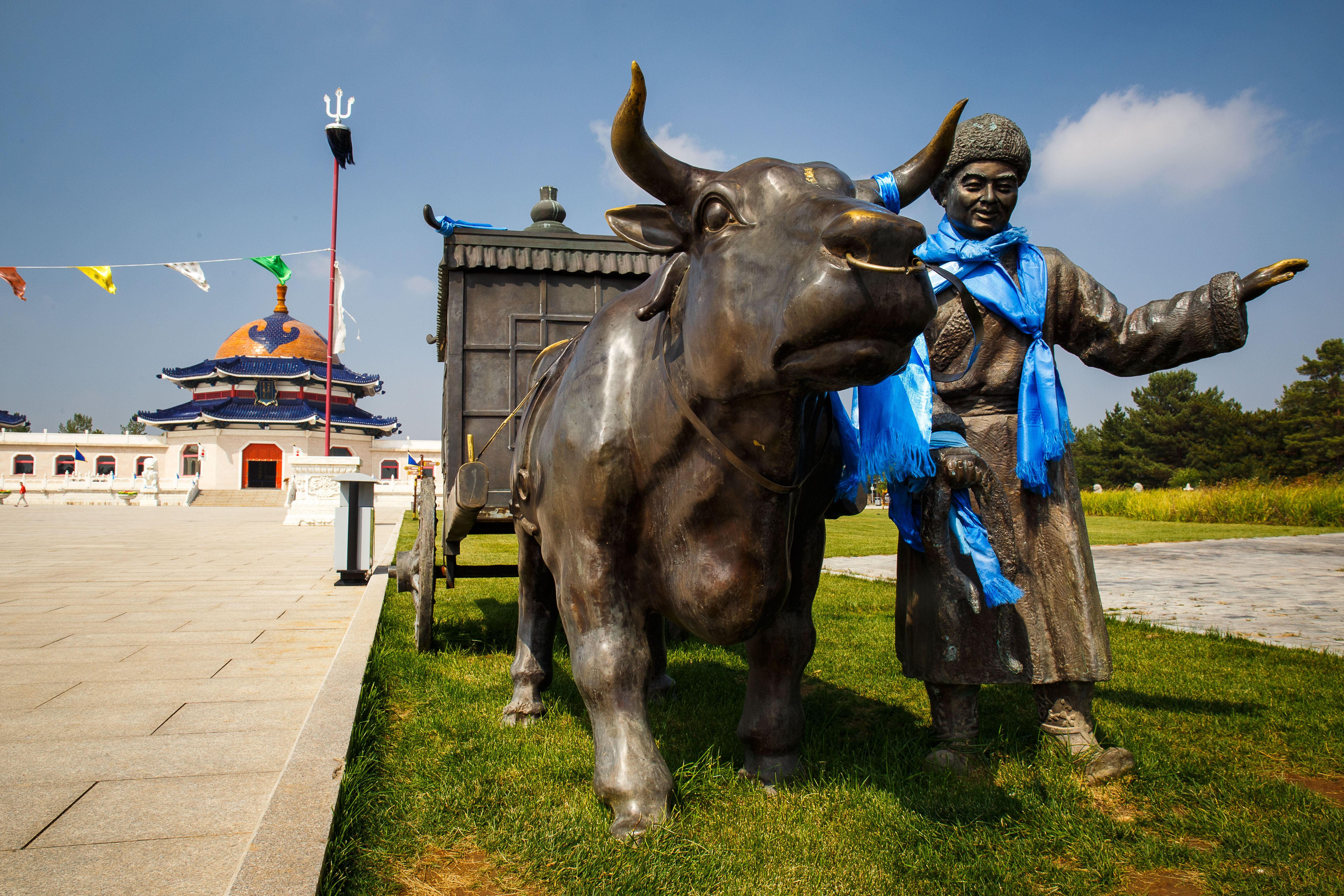
We spend the first few days driving along backroads, studying terrain, looking for places that would be impassable for a horse- or oxen-drawn cart carrying a corpse.
Over the week, Nichols narrows down his hypothetical route by a process of elimination. We follow a railway line that heads north to Zhongwei.
“Railways have to be basically flat,” says Nichols. “Of course, there were no railroads in 1227, but that’s a huge hint. This railroad gives us the track from the Liupan Mountains: flat and straight through this valley to the Yellow River.”
On day four, we pull up in a jeep at the surreal Shapotou Tourist Zone, with its enormous castle entrance, coloured flags flapping in the wind, pop music blaring from loudspeakers and golf carts taking tourists out to embark on overpriced camel tours. Nichols explains to the perplexed cameleers that we aren’t interested in taking the tourist route and want to ride their beasts north instead. He wants to test how far a camel can travel across desert sands in a day.
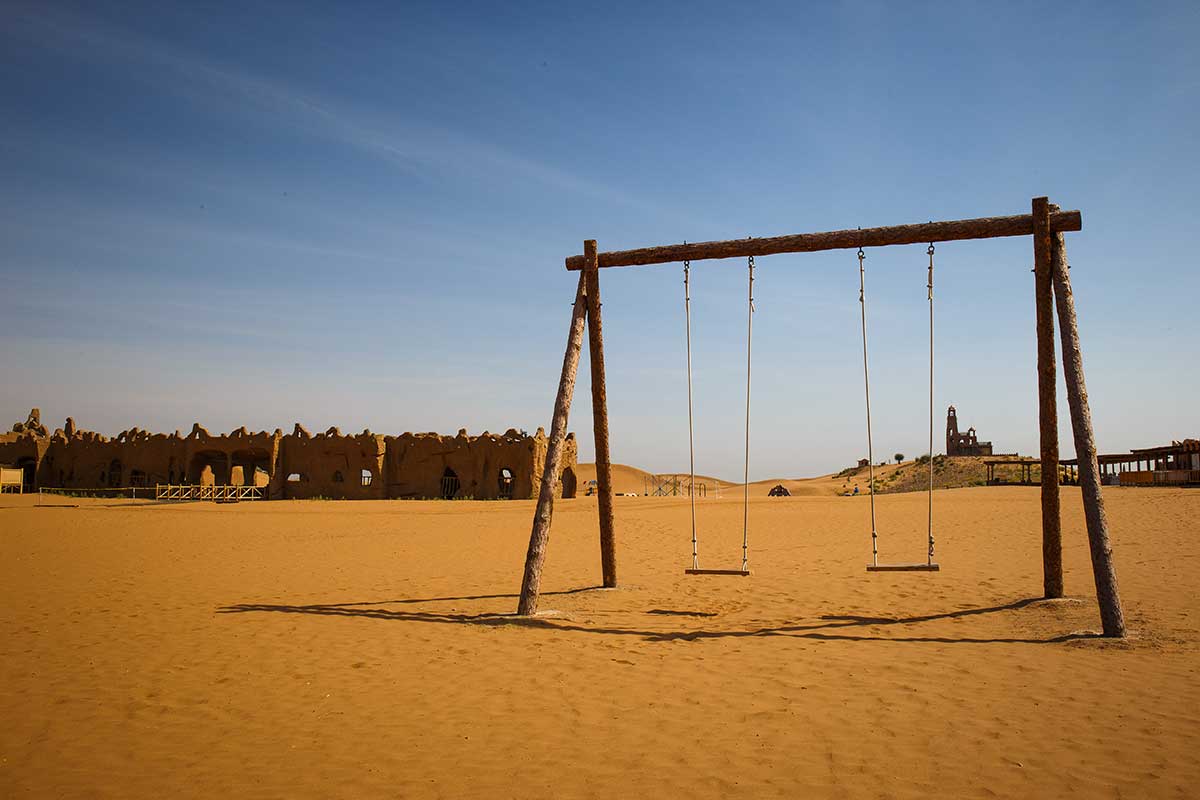
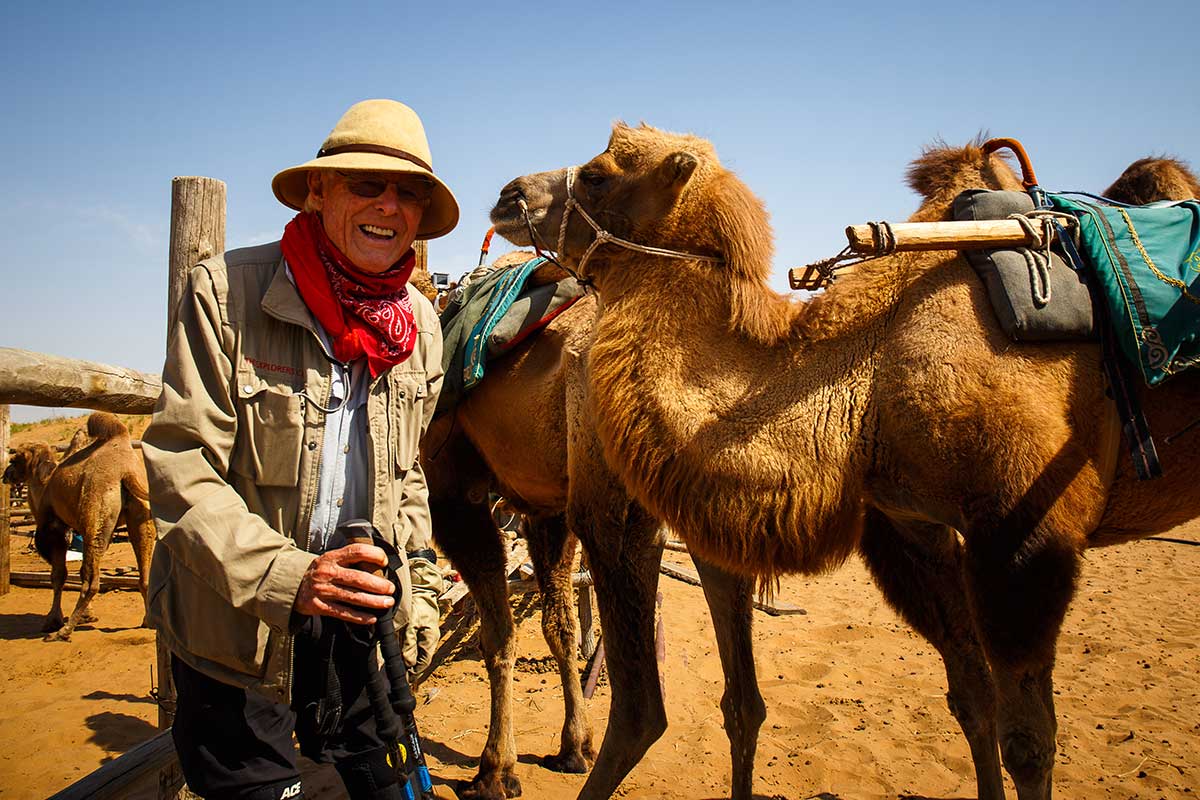
“I can’t talk about how long it takes a camel to go up this desert to Mongolia unless I’ve done it myself,” he says. “I’ve always found that it’s vitally important to be hands-on.”
Says Lauterbach, “Alan does his exploring in a shoe-leather fashion, where you go out and really beat the pavement to find the information. And he’s doing it in the classic old-fashioned way. It’s fascinating to watch him work.”
We become hypnotised by the alien landscape of the Tengger Desert and the lurching movements of the camels. Our ride resembles little what a Mongol army’s would have been like, but gives an idea of how time-consuming it is to cross such challenging terrain. The dunes are steep and the sand gives way under the camels’ feet, causing them to slide and stumble; the fact that they’re tied together on a short rope doesn’t help.
“I can’t talk about how long it takes a camel to go up this desert to Mongolia unless I’ve done it myself. I’ve always found that it’s vitally important to be hands-on.”
We set up camp just before nightfall and, watching him walk up the dunes, his feet sinking into the sand, for the first time I worry that Nichols looks tired. It’s easy to forget his age because we spend most of the time struggling to keep up with him.
“He’s driven,” observes Griffith. “And he pushes himself – physically, spiritually and intellectually.”
“Alan really is formidable,” says Hao, who is also a chef and hotelier. “The way he climbs mountains and things – you wouldn’t see Chinese men of his age doing this.”

For his part, Nichols, whose motto is that anything can be done at any age (it just takes a little longer), says he feels exhilarated.
“I have given up my hypothesis of the cortege going north through here,” he says. “You’d never take a cart, even if it was pulled by camels, through this. This would be a really big job even for Chinggis Qa’an, with his unlimited camels, troops, resources.”
The procession would have travelled along the outskirts of the desert, he suggests. Most experts believe the funeral cart was drawn by oxen, but “I asked the cameleers here, what about oxen?” says Nichols. “The oxen are too low, they wouldn’t go through the sand. A camel can go a week without water or food.
“Ours were very slow-paced camels. But just camels like this – and he would have had warrior camels – can travel 60km to 80km a day. Add to that the fact that Mongol warriors would be moving day and night.”
That night we eat by a fire, Nichols serenading us with 1930s campfire songs while the cameleers teach the film crew raucous drinking games.
In the morning, the sand is smooth except for snake trails and the footprints left by lizards and small mammals. While we ride, a large grey fox sprints away from us across the dunes.
Leaving the desert the next day, we detour to the swampy banks of the Yellow River, in Yinchuan, before heading out on a long, dusty drive towards Ordos, in Inner Mongolia.
“We’re standing on a battlefield,” says Nichols, pacing the muddy ground. “We’re at a place that was critical to Chinggis Qa’an’s attack on the Tanguts,” he says, referring to the 1226 Battle of the Yellow River, part of Genghis’ campaign to conquer the Western Xia empire.
“The best defence from Mongol cavalry? Water. So the Tanguts built ditches, lakes ... but Chinggis waited till wintertime, when it froze.”
Mongol horses could swim but a funeral procession would have had to transport heavy carts across the river, he says. “And they did that, but they wouldn’t walk along the river like we are and get bogged down.”
As we drive out of Ningxia – home to Hui Muslims – to Ordos, the script on the road signs changes from the horizontal Arabic to the vertical Mongolian, even though Mongolians make up just 20 per cent of the population in Inner Mongolia.
We take six-lane highways past colossal skyscrapers, many of them ghostly empty shells, lit up at night only by the neon lights lining their exterior.
Our route changes as Nichols updates his hypothesis according to his findings. He scribbles in a small notebook he keeps in his pocket and quizzes locals – tour guides, drivers and professors – for information, all the time being careful not to reveal his mission.
Our final stop is the Mausoleum of Genghis Khan, in Ordos, an area the warrior was believed to have admired in 1227. It holds artefacts, including his saddle and bow, and inside there are statues of Genghis, incense, signs urging visitors to make donations and souvenir shops selling trinkets featuring his face. Despite the name, few believe Genghis’ body is buried in this “mausoleum”, which was built in 1954 by a Chinese government keen to adopt the legendary warrior as a national hero.
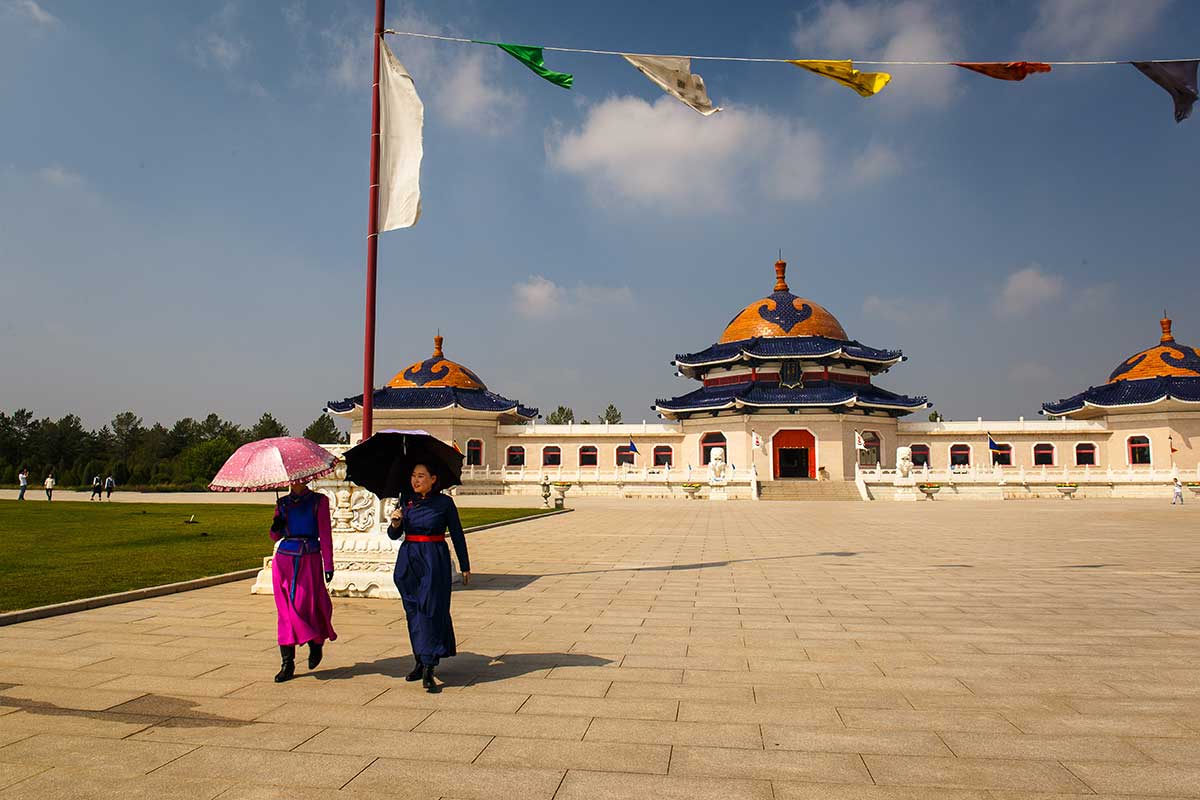
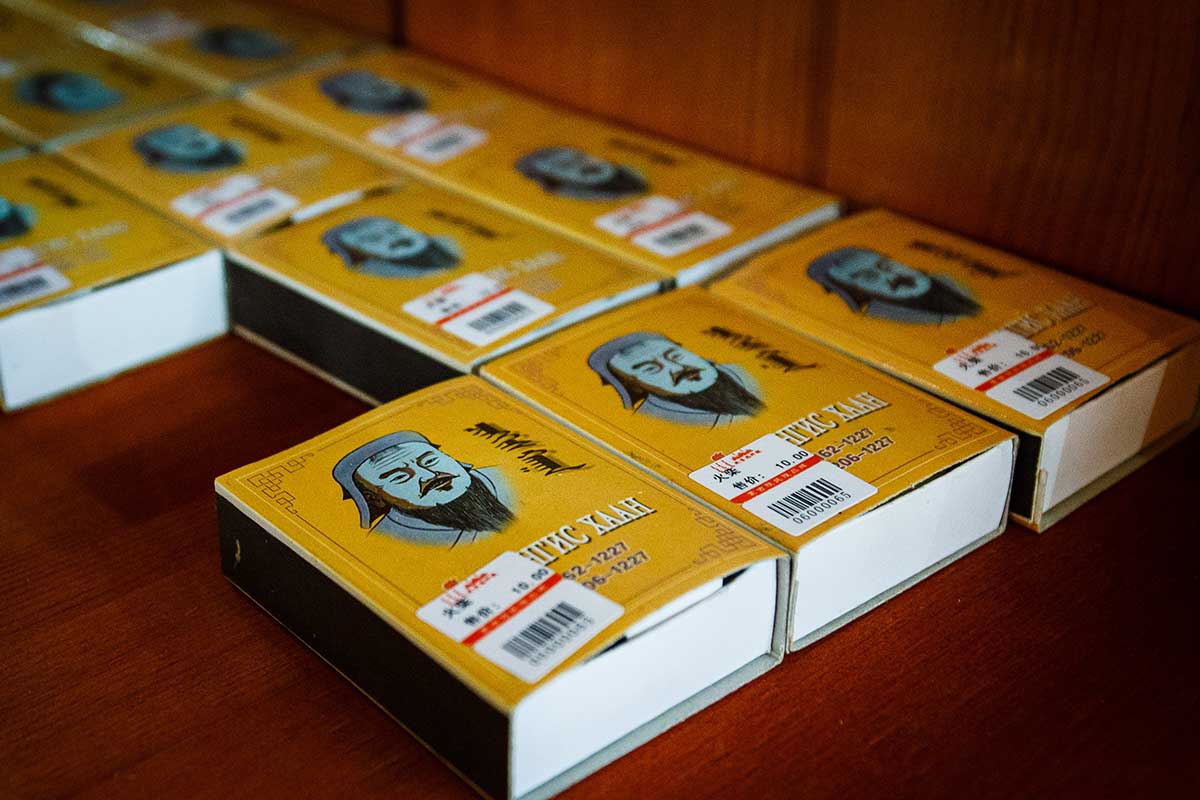
Later when I tell Weatherford I’m struggling to find a Mongolian expert willing to share their point of view for this story, he explains that, language barriers aside, such issues are politically sensitive.
“Scholars in many countries have claimed that the site is in their country – Mongolia, China, Russia and Kazakhstan, in particular,” says the anthropologist. “The claim of finding a tomb in any one of these countries would be somewhat alarming to the others and might be interpreted as a claim that that country is heir to the world empire of Genghis Khan.”
Eventually, Naran Bilik, a distinguished Inner Mongolian professor specialising in anthropology and ethnicity at Fudan University, Shanghai, replies somewhat cryptically to my emails. He says efforts to discover Genghis’ body have to take into account at least three factors.
“First, the subjectivity of the locals is vital since Genghis Khan means a lot to them,” he says. “Second, even amongst the Mongols there are different sections and private individuals – who can represent the Mongols? Are Inner Mongolians part of those who have a voice in such matters? Thirdly, it is a matter of negotiation and compromise, eventually. All parties involved have a stake in it and they have to strike a balance between different claims.”
Nichols says he’s aware of the sensitivities.
“I have an obligation to protect the tomb. And I’m not big enough to do it myself. It’d have to be the United Nations; it has to be cooperative.”
“I feel that responsibility to do my best. In fact, I even thought at one time that if I was unable to get the right people involved, I would not tell anybody. Or, like Chinggis Qa’an would do: I would tell them the wrong place,” he says. “I have an obligation to protect the tomb. And I’m not big enough to do it myself. It’d have to be the United Nations; it has to be cooperative. And the world has to know about it, and expect that we’re going to preserve this memory.”
Nichols says he thinks the analysis of the data he and his team have collected will be complete by March.
“As a scholar I look forward to learning about what he finds,” says Weatherford. “Yet, as a person who loves Mongolia deeply, I also love the mystery surrounding the end of Genghis Khan’s life.”
And if you’re thinking this is the explorer’s last big shot at glory before he retires, you’re mistaken.
“This is definitely not my last expedition,” says Nichols.
His next? All I can say is that it will take him into remotest Bhutan.
I could tell you more, but then I’d have to shoot you.
See more reports on Genghis Khan and Mongolia in Post Magazine
Photo essay: Mongolia’s fearless child jockeys race for glory at NaadamWinners and losers in Mongolia's mining gold rush
Mongolia’s nomads: masters of their destiny in a changing world
‘They’re all wrong’: 86-year-old explorer leads new hunt for Genghis Khan’s tomb on ‘Mountain X’



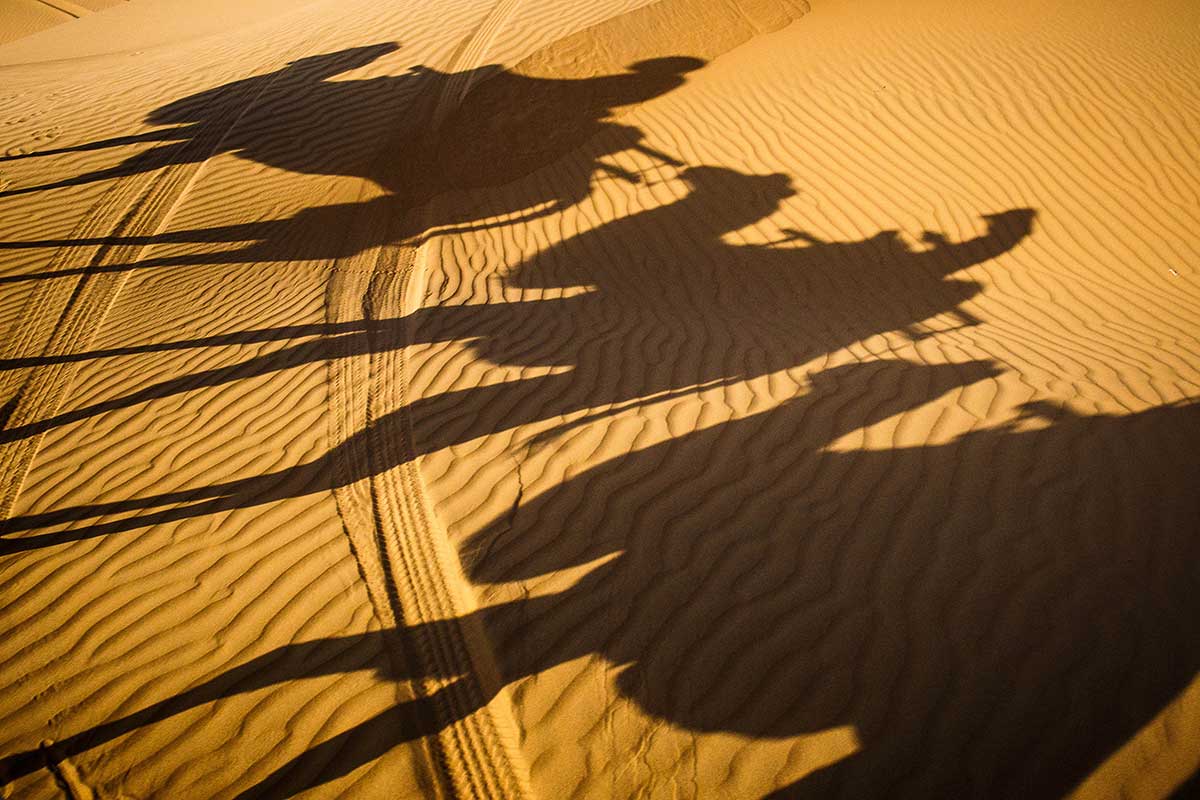
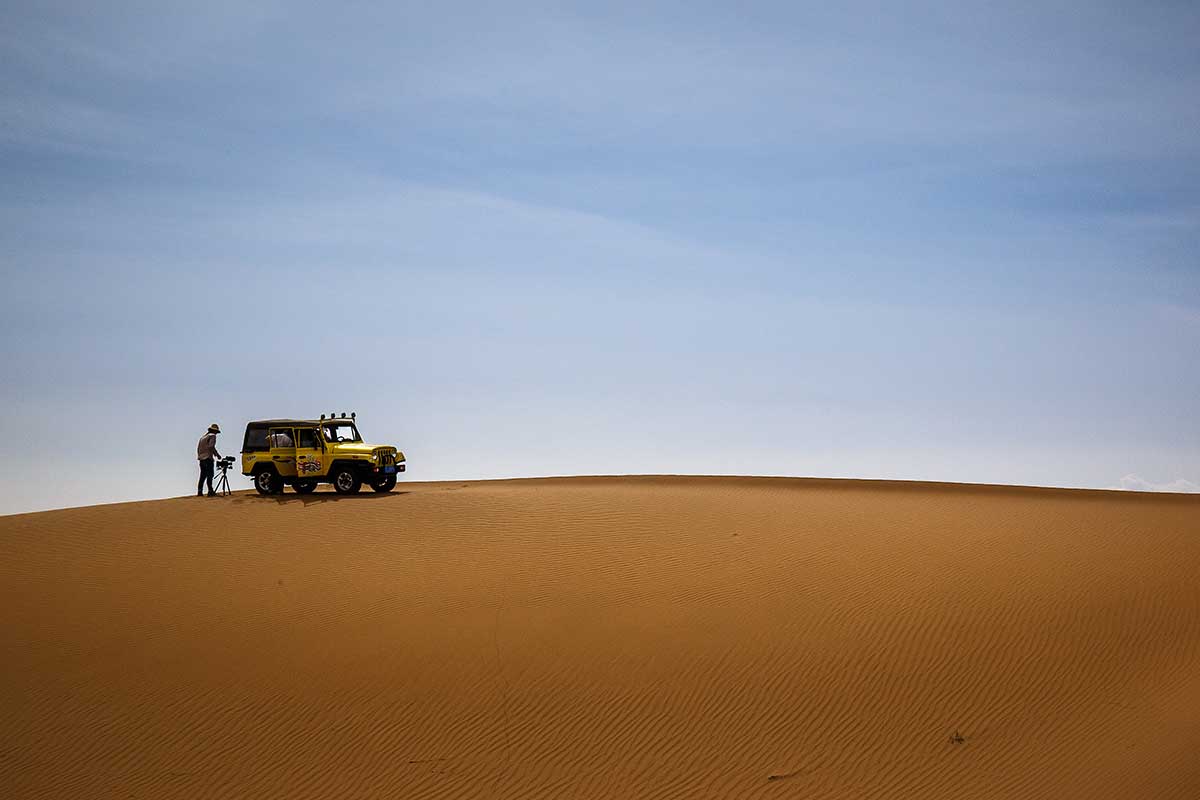
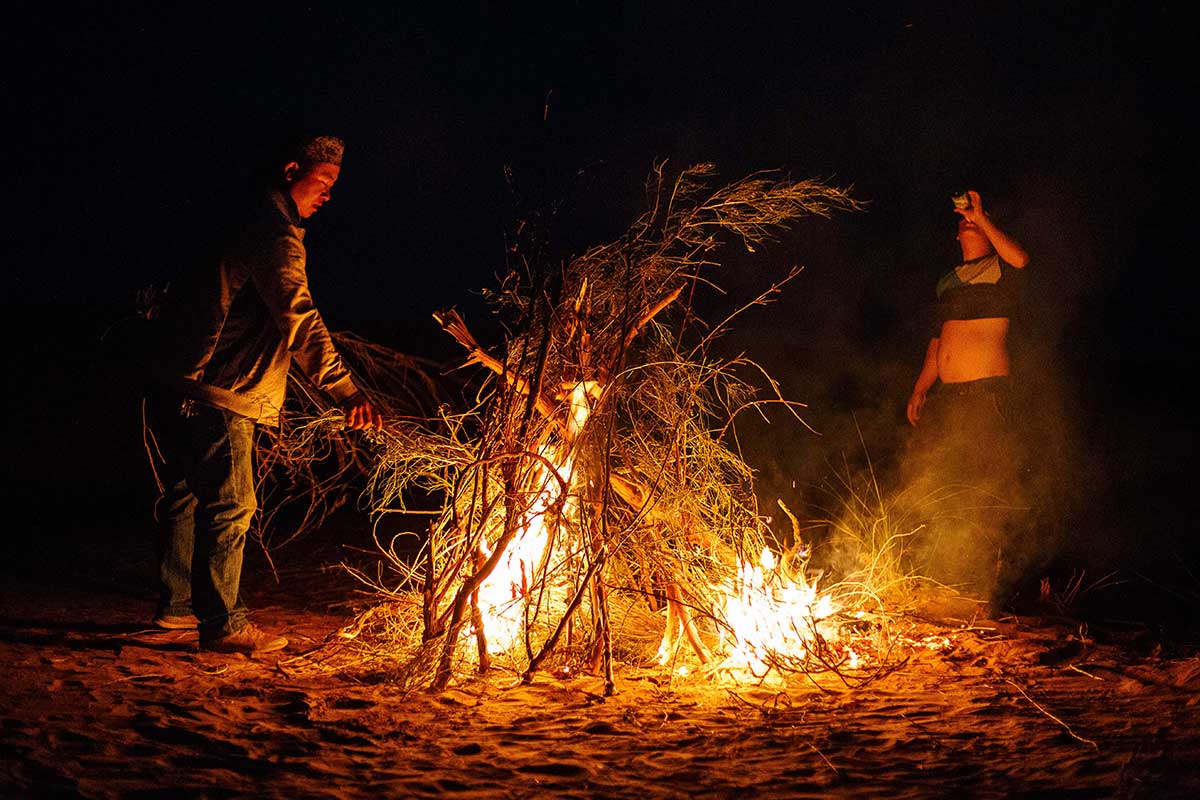
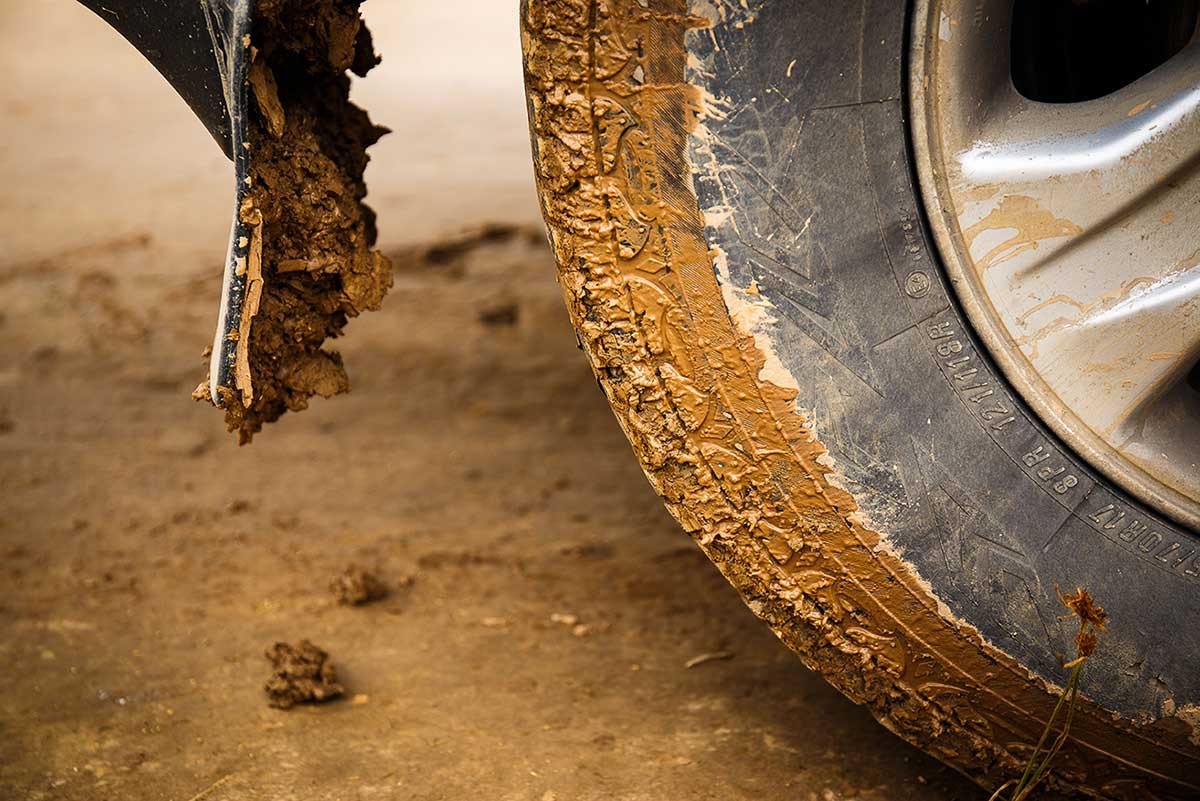
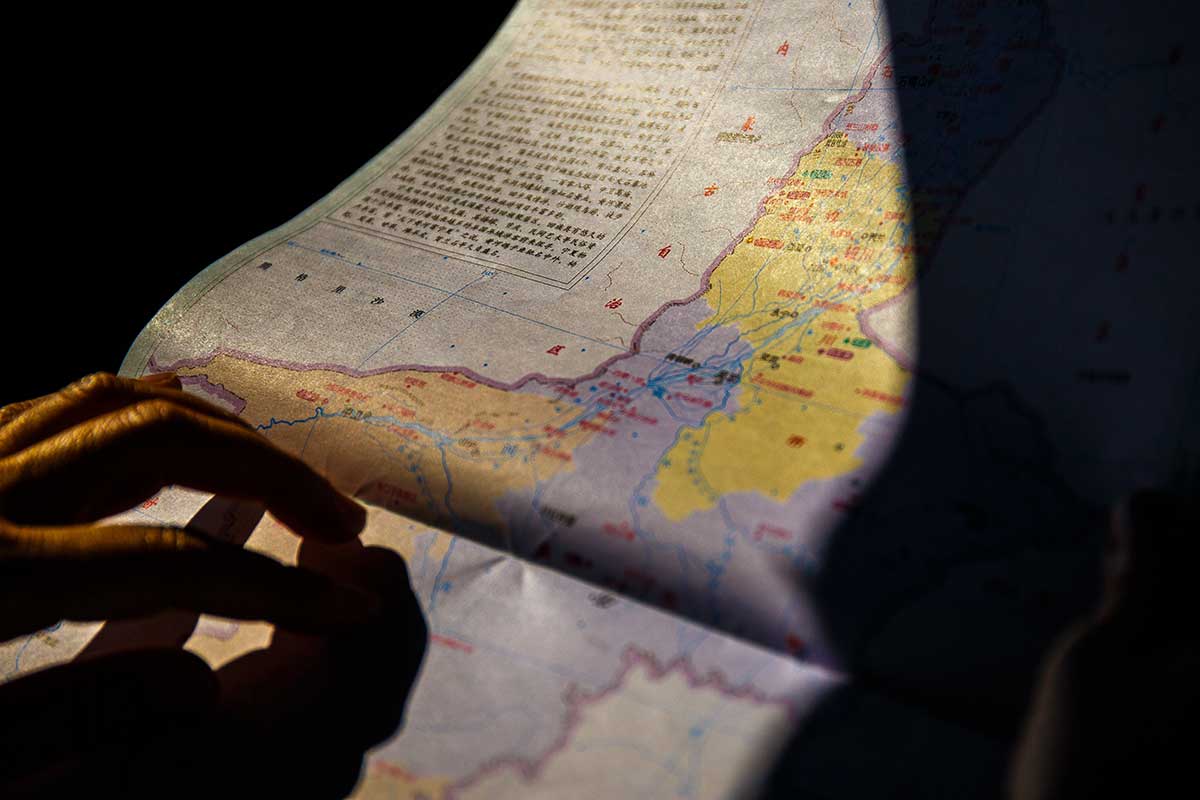

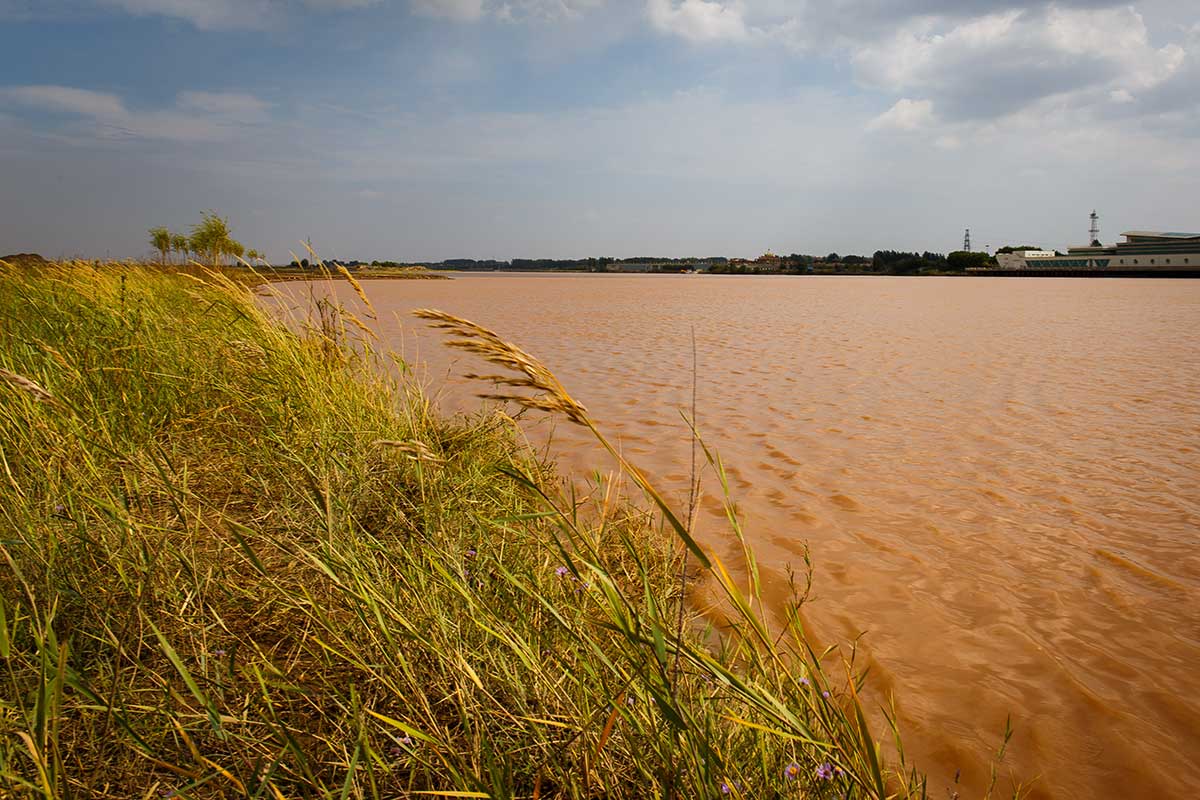
No comments:
Post a Comment